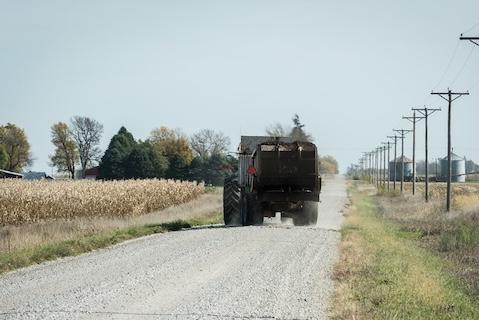National Farm Safety and Health Week 2025 is Sept. 21–27, and Iowa State University Extension and Outreach reminds operators that safety is critical when handling, transporting and applying manure.
Associate professor and extension agriculture engineering specialist Daniel Andersen highlights five key manure safety tips to help farmers, as well as their families and communities, stay safe and healthy.
Equipment and rural road safety
According to Andersen, between 2005 and 2010, more than 7,000 crashes involving farm machinery occurred. In Iowa, rear-end collisions often occur during busy harvest and manure application seasons, and research shows that states with strong lighting and marking standards for agricultural equipment have significantly fewer crashes.
“Make sure that equipment lights work, slow-moving vehicles signs are visible and equipment is properly marked,” he said. “It saves lives.”
Andersen also encourages those sharing the road with farmers operating equipment to allow space, patience and respect, because “40 tons of machinery is not very forgiving.”
Health and wellness
Manure application season demands long hours, early mornings and late nights. Staying hydrated and eating balanced meals provides the fuel needed to handle the stress and unpredictability of fall work. Adequate rest also remains important, as fatigue slows reaction time.
Resources like the Upper Midwest Agricultural Safety and Health Center’s Farm Safety Check on Fatigue and Healthy Habits Checklist provide practical tips to manage stress, eat well and stay alert.
Generations of farming
Farms are great places for kids to grow up, but they can also be dangerous, especially around manure storage and equipment. Youth should never be allowed near manure pits or pumps. Training, supervision and protective gear are essential before letting a young person help with chores.
“Farm safety extends to the next generation. Families can pass on farm skills and a safety culture.”
Confined spaces
Manure pits, tanks and pump rooms are confined spaces. Liquid manures release potentially hazardous gases (hydrogen sulfide, methane and ammonia) as the manure ages and decomposes. Manure movement, such as pumping and agitation, causes the rapid release of these gases.
“Hydrogen sulfide accidents can happen quickly, so alert those on your operation of potential danger zones and share your team’s safety plan,” said Andersen.
Biological safety
Manure carries more than nutrients — it can also hold pathogens. Those working with manure should wear protective clothing, gloves and boots, and practice proper hygiene, including washing hands after handling manure. Preventing exposure helps reduce human and animal health risks by limiting potential spread from barn to barn or site to site.
Fall manure application is a busy season and essential for crop nutrition, but safety cannot be overlooked. Following these guidelines helps farmers protect themselves and their families.
For more information, contact Melissa McEnany at mmcenany@iastate.edu or Daniel Andersen at dsa@iastate.edu.

Comments
Submit a CommentPlease refresh the page to leave Comment.
Still seeing this message? Press Ctrl + F5 to do a "Hard Refresh".